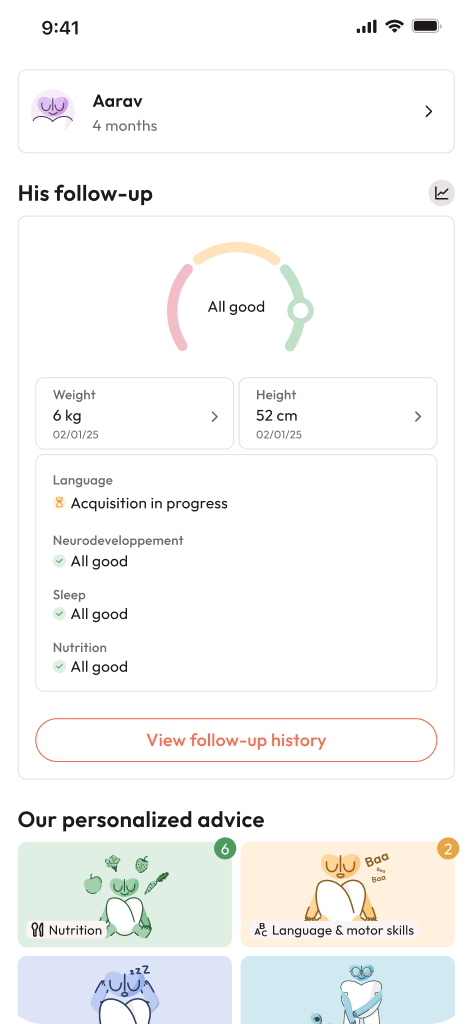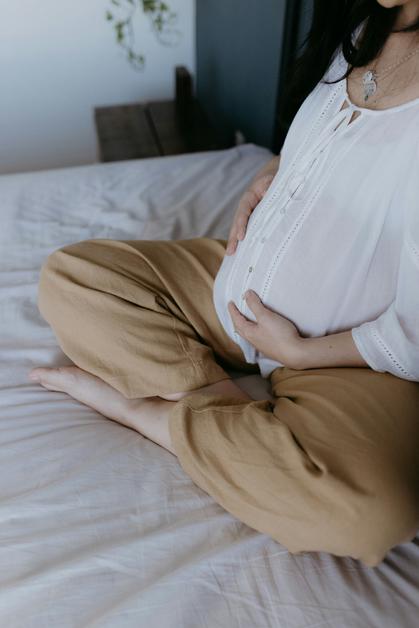When that inexplicable twinge or persistent ache arrives right at the front of your pelvis, everyday routines—lifting your curious toddler, sitting in the car, or simply rolling out of bed—can suddenly feel like mountain climbs. Parents, especially those expecting or recently postpartum, often face challenges linked to the pubic symphysis. This joint, though small, plays a surprisingly big part in maintaining pelvic stability, evenly distributing the body’s weight, and supporting your posture in those bustling family moments. Questions swirl—what causes this discomfort, how can it be managed, and more importantly, is recovery even possible while juggling parental demands? Delve into the details of “pubic symphysis,” clarify possible risks, decode symptoms, and gather strategies—practical, evidence-based, and perfectly within your reach. Whether the pain is a new arrival or a stubborn guest, understanding your own anatomy offers immense relief, physically and mentally.
What is the Pubic Symphysis? Structure and Function Demystified
Imagine a seamless bridge uniting the left and right pubic bones, nestled right at the centre-front of your pelvis—this is your pubic symphysis. Not quite bone, not entirely soft tissue, it’s a secondary cartilaginous joint possessing a fibrocartilaginous disc at its centre, softly sandwiched between layers of hyaline cartilage. Flanking this joint, powerful, thick ligaments (superior, inferior, anterior, and posterior pubic ligaments) act almost as bodyguards, curtailing any dramatic separation while still allowing the flexibility life demands.
Why is this union so important? Every time you get up, walk, climb stairs, or simply shift positions, the pubic symphysis gently absorbs impact and redistributes mechanical stress, maintaining pelvic stability throughout. It’s a balancing masterpiece—too rigid, and daily movement stumbles; too loose, and the familiar pinch or instability sets in. During pregnancy, relaxin and estrogen sweep in, softening the joint and ligaments, encouraging the pelvis to open softly, preparing for childbirth. Post-birth, hormone levels drop, and the joint regains strength, though sometimes a little sluggishly.
Common Conditions Involving Pubic Symphysis: Causes and Triggers
Wondering why “pubic symphysis pain” insists on making a grand entrance right when you’re least prepared? The reasons are surprisingly varied.
- Symphysis pubis dysfunction (SPD): Most familiar during pregnancy, SPD is when hormones loosen up the support structures, leading to a sensation that ranges from mild discomfort to a deep, biting ache right above the groin.
- Diastasis of the pubic symphysis: When widening exceeds normal childbirth adaptation, feelings of instability can intensify, and you might even notice “clicking” or “grinding” as you move.
- Osteitis pubis: Inflammation of the joint, frequently seen in sports enthusiasts—think athletes, runners—where repetitive stress gets the better of pelvic harmony.
- Other triggers: Uncommon, yet possible—severe infections (septic arthritis), trauma from falls or accidents, or progressive bone wear like osteoarthritis.
Risk factors do not discriminate. A steep weight gain, previous pelvic injuries, muscle imbalances, heavy lifting, rapid postpartum recovery attempts—all might nudge the pubic symphysis into discomfort.
Recognising Warning Signs: How the Body Speaks
The signals from a troubled pubic symphysis aren’t always subtle. Ever felt a stabbing or pulling feeling while lifting a leg, stepping out of bed, or standing after a brief rest? Sometimes, pain radiates—involving the hips, lower back, groin, or inner thigh. Daily activities, from carrying a child to climbing a flight of stairs, can transform from routine to daunting. Fatigue and emotional exhaustion often follow, making it difficult to enjoy parenting’s daily joys. Listen also for less obvious clues: clicking sounds, grinding sensations, or fleeting instability in the pelvis during movement.
Diagnosing Pubic Symphysis Issues: From Clinics to Imaging
Prompt, thorough assessment is key. A practitioner—often a gynaecologist, physiotherapist, or orthopaedist—may gently palpate your pubic area (locating tender spots), observe your gait, and check for muscle balance. In pregnancy, ultrasound is favoured, offering a safe look at joint separation or swelling without radiation. MRI uncovers details of soft tissue or potential disc inflammation, and X-rays (mainly after birth) can further clarify joint spacing or detect subtle fractures. Early diagnosis often shortens recovery and spares chronic discomfort.
Pubic Symphysis Pain Management: What Can Parents Do?
Complete rest is rarely the answer—gentle movement nourishes healing. Wondering what should change first? Precision in movement. Avoid broad, single-leg activities or wide leg openings. Try these evidence-based strategies:
- Modify Movement: Use smaller, symmetrical motions. When shifting in bed or standing, keep knees together.
- Sleep Support: Slide a pillow between knees—this minor detail can significantly cushion the joint.
- Pelvic Belts: Many parents find immediate comfort strapping on a pelvic support belt or maternity belt, which steadies the joint and brings the confidence back into walking.
- Physical Therapy: With guidance, gently bolster the pelvic floor, deep core (transversus abdominis), and surrounding stabilising muscles. No sudden moves, just slow, progressive reinforcement.
- Heat & Cold Therapy: A warm (or cool) pack against the pubic area can quell the most nagging flare-ups.
- Pain Control: Paracetamol is considered safe under medical supervision. For those seeking alternatives, osteopathy, myofascial release, or acupuncture are worth exploring.
- Hydration & Nutrition: Maintain ample calcium, magnesium, and vitamin D—factors that quietly fortify joint and bone health for parents too.
Surgery? Reserved for only the most severe, unresponsive cases—typically after significant trauma or unremitting separation of the joint.
Prevention: Postural Habits and Pelvic Wellness
The best medicine remains timely prevention. How? Maintain a balanced, upright posture; move both legs together when standing up or getting out of bed; avoid static, tiring positions. Short, steady steps trump wide, hurried ones. Enjoy walking, swimming, and gentle yoga tailored for pregnancy. Make pelvic floor exercises (Kegels) and mild core strengthening daily habits. Embrace a pregnancy ball for improved seated alignment; let go of unnecessary heavy lifting; and honour physical boundaries—your body knows its limits.
Eating well matters just as much—enough magnesium, vitamin D, and calcium go a long way in supporting bones and shifting the needle towards recovery.
Special Focus: Diastasis and Pregnancy-Specific Disorders
The term “diastasis of the pubic symphysis” refers to an excessive split—beyond what’s needed for birth. Symptoms? Pain while moving or rotating in bed, trouble separating the legs, or a feeling of sagging pelvic support. Recovery recommendations include:
- Relative Immobilisation: A pelvic belt coupled with extra support at night.
- Regulate Activity: Monitor and respect thresholds—avoid abrupt transitions or lifting.
- Therapeutic Guidance: Physical therapy, osteopathy, and even targeted breathing techniques can quicken progress.
- Time Course: Fortunately, most recover over weeks to months—especially if they pace activities and stay responsive to discomfort.
Trauma and Rare Injuries: Fracture, Disjunction, Sprain
Sudden trauma—a sharp fall, accident, or intense athletic event—can injure the pubic symphysis beyond typical wear and tear. Rapid, acute pain, loss of pelvic control, and difficulty moving may follow. Here, healthcare takes front stage: strict rest, extended pelvic support via belts, and dedicated therapy become part of everyday life until healing is sound. Surgery remains a rare path.
Sports, Activity, and Pubic Symphysis
Active parents, athletes, and fitness enthusiasts carry a heightened risk. Movements like deep squats, wide leg stretches, high-impact running, or martial arts can expose the pubic symphysis to microtrauma. After childbirth, with ligaments still in a softened state, these risks only amplify.
Prevention essentials:
- Prioritise a careful warm-up.
- Boost exercise intensity gradually.
- Integrate core and pelvic stability drills.
- Choose supportive footwear.
- Trust your instincts—seek advice if any pain sets in.
Forensic Considerations: Age Assessment and the Pubic Symphysis
In forensic settings, experts analyse the pubic symphysis to estimate age—watching for thinning cartilage, increased bone ridges, and changes in the joint space. Childbirth history can influence these features, leaving subtle, lasting variations that help differentiate normal aging from changes due to the demands of parenthood.
Key Takeaways
- The pubic symphysis acts as the keystone for pelvic balance, stability, and mobility—especially amid the physical expectations of pregnancy and parenting.
- Most discomfort responds well to patient, conservative interventions—pain does not always spell long-term suffering.
- Tune into warning signs early; tailor movement; employ supportive tools (belts, pillows); and consider supportive therapies—these are your best allies.
- A healthy diet, appropriate exercise, and posture that respects your limitations work together to prevent and ease pain.
- If uncertainty or persistence arises, turn confidently to healthcare professionals for support—timely adaptation can transform the parenting experience.
- For personalised advice and free health questionnaires for children, explore the Heloa app.
Questions Parents Ask
Can men experience problems with the pubic symphysis, or is it only a concern for women?
Definitely, men can have discomfort or issues at the pubic symphysis too. Often, conversations focus on women—especially in context of pregnancy—but in men, the joint also bears the body’s weight and buffers shocks during activities. Sports injuries, strenuous work, or direct injury can layer on pain or inflammation. If discomfort surfaces, don’t hesitate—taking care of pelvic health benefits everyone in the family.
Where exactly is the pubic symphysis located, and what does it feel like if there is a problem?
The pubic symphysis rests at the centre-front of the pelvis, uniting the left and right pubic bones. For women, it’s near the clitoris; for men, just above the penis. When problems arise, sensations might range from a deep, dull ache to sharp or burning pain, often low in the groin or directly at the pelvic front. Movements like stepping, twisting, or sitting up can highlight discomfort. Consulting a practitioner clarifies the issue and opens doors to relief.
Why does the pubic symphysis move more during pregnancy?
During pregnancy, hormone surges—mainly relaxin and estrogen—make ligaments and tissues surrounding the pubic symphysis more flexible. This adaptive shift allows the pelvis to widen, simplifying the baby’s passage at birth. Occasionally, though, this new mobility brings a sense of instability or ache. Typically, it resolves post-delivery, and plenty of support measures are available for smoother transitions.









